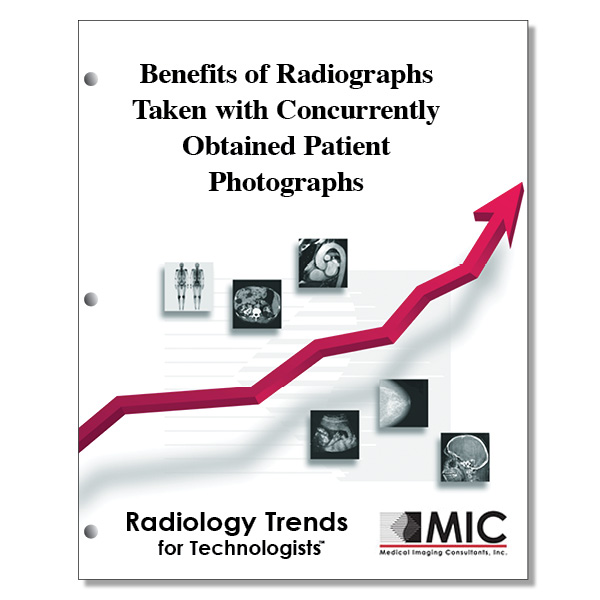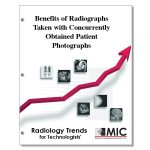

Benefits of Radiographs Taken with Concurrently Obtained Patient Photographs
Patient photographs automatically obtained along with with portable radiographs demonstrate benefit in patient identification, laterality, and position and may assist with interpretation.
Course ID: Q00602 Category: Radiology Trends for Technologists Modality: Radiography1.75 |
Satisfaction Guarantee |
$24.00
- Targeted CE
- Outline
- Objectives
Targeted CE per ARRT’s Discipline, Category, and Subcategory classification for enrollments starting after January 27, 2023:
[Note: Discipline-specific Targeted CE credits may be less than the total Category A credits approved for this course.]
Radiography: 0.75
Patient Care: 0.75
Patient Interactions and Management: 0.75
Registered Radiologist Assistant: 0.75
Patient Care: 0.75
Patient Management: 0.75
Outline
- Introduction
- Camera Technology in Brief
- Impact of Point-of-Care Photographs on Portable Radiography
- Impact on Quality Control
- Assisting with Interpretation
- Preventing Unnecessary Calls: Performing Oneís Own Clinical Correlation
- New Way to Physically Assess Patients
- Photography in Medicine and Other Approaches to Photography in Radiology
- Conclusion
Objectives
Upon completion of this course, students will:
- understand the authors’ motivation for the development of technology to obtain point-of-care patient photographs along with portable radiographs
- recall the hospital in which the point-of-care technology was implemented
- state the HIPAA compliant environment in which patient photographs are stored
- explain HIPAA compliant patient identifiers
- list the advantages of implementing point-of-care technology
- describe where the camera is mounted in order to obtain patient photographs
- explain the information contained on the photographs that are sent through the hospital’s wireless fidelity
- compare display size of a patient photograph to that of the radiograph
- state the number of wrong-patient errors in radiology as documented by the Pennsylvania Patient Safety Authority in 2009
- recall how many wrong patient errors were noted within the first 350 portable radiographs taken at the authors’ institution while using point-of-care photographic technology
- describe advantages of point-of-care photographs as they relate to patient positioning
- explain how point-of-care photography assists in the diagnosis of osteomylitis
- describe how point-of-care photography assists in helping the radiologist rule out free air
- list the information from patient monitors that may be captured during point-of-care photography
- explain the disadvantages of using photographs of patient monitors in the diagnostic process
- list types of support hardware that may be photographed during chest and abdominal radiography
- describe the area imaged in thoracoabdominal radiography
- differentiate enteric tubes from other types of support hardware
- explain why an enteric tube may not be seen on a radiograph
- utilize patient photographs to discern potential issues not seen on radiographs
- explain the unexpected finding in the authors’ initial experience with the point-of-care technology
- correlate patient external appearance with their internal findings
- state how many years ago photography in medicine was utilized to document dysplastic nevi
- describe total-body photography reimbursement by insurance companies as it relates to specific conditions
- list the disadvantages of using smart phone or tablet technology to obtain patient photographs
